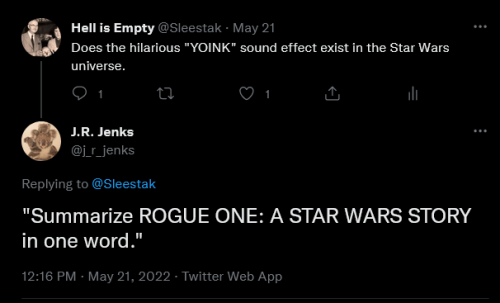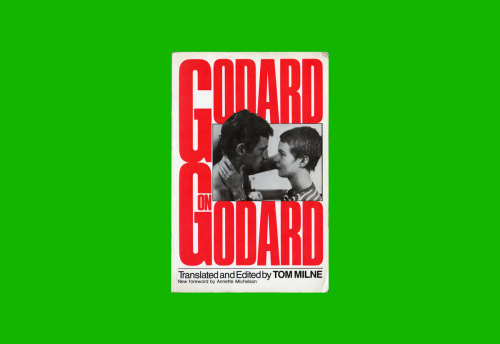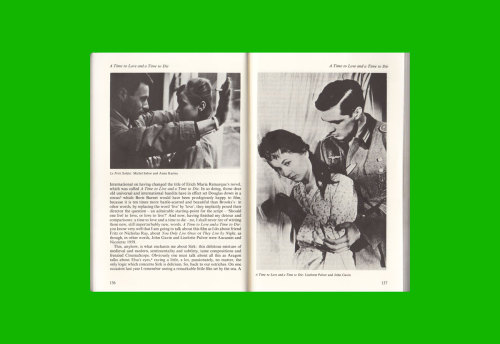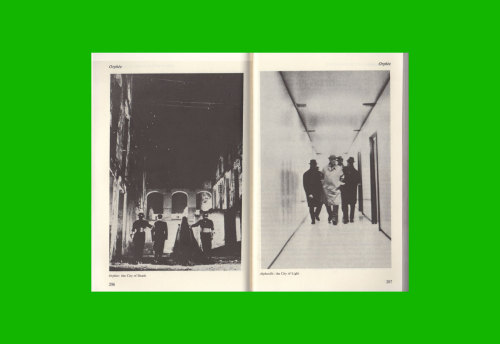#film critique
One of the weirdest opinions/criticisms(?) I’ve heard from a couple people at the theater after The Batman ended was “I liked Spider-Man (No Way Home) better.”
Like?? I know what you like is down to personal preference and all that, like if you just personally vibed with NWH more then I get that, but, this just doesn’t make sense to me…
The Batman and Spider-Man: NWH are wildly different films in terms of story, characters, universe, tone….how are they comparable? Just because they’re both superhero/comic book films??
I enjoyed both movies for different reasons, but they’re not really comparable in my mind. Both movies are their own thing entirely.
Stop lumping all comic book films together like they’re all a single genre (people need to stop doing the same to animated films as well).
Preface:This is a paper which was produced for Rei Terada’s comparative literature class “Aversion to Politics” in May 2018. In examining representations and understandings of the political in Taxi Driver (1976) I attempt to analyze the way in which the antipolitical and ideologies of disenfranchisement are intimately tied to whiteness and racist violence, and conversely the way in which it is intentionally depoliticizing to obfuscate racist violence as “antipolitical”. In this essay the use of the phrase “political #1″ refers to organization for power that acknowledges one or more major antagonisms in society, while “political #2″ is meant to articulate the concrete system and process of governance in a state or other formal structure. I am also using the terms “antipolitical” to mean the rejection of political #2 and anything associated with it, and depoliticized to indicate a picture of society without its antagonisms, the antagonisms that underlie political #1.
In Scorsese’s Taxi Driver (1976), racism is profoundly tied to the structures of the antipolitical; antipolitical thought is something which is only accessible, or at least only used by, the “disenfranchised” white man, and this subsequently ties into the way race is imagined in the film. The mythos largely being put forward is that Travis is (and, to an extent, white working-class men in general are) disenfranchised in a way which results in apathy towards the bureaucratic processes of political #2 and a general sense of festering anger which manifests as the antipolitical. Because antipolitical is tied to whiteness, the violence which results from it is frequently enacted on black and nonwhite characters or conceived of in connection to white imaginings of Blackness. Furthermore, one of the central issues that disenfranchisement seems to cause for Travis is his concern that he is surrounded by “the scum of the earth,” which has intentionally racist connotations in the way he understands Jewish and Black characters in particular to be this “filth,” but what seems to be hidden in this complaint is the notion that disenfranchisement of white men is bad because it forces them to be “reduced” to the same level as people of color and marginalized communities. As a result, there is also a way in which the film is depoliticizing these racist tensions by obscuring them within the general category of the antipolitical, rather than acknowledging the political #1 conflicts which create and are created by systemic racism.
Travis’s reoccurring assertion that the people surrounding him in the city are “the scum of the earth” is also very racially coded; he gets along, for example, with other white taxi drivers such as Wizard and Doughboy and wants to rescue Iris and possess Betsy, so they seem to be implicitly excluded from the “filth” he sees. On the other hand, Travis reacts very negatively towards characters such as Tom (who is played by a Jewish actor, and whose character is also coded as being Jewish), in a way which goes beyond something that might be understood to be simply competing over Betsy’s attention/affection. When Travis and Betsy talk in the diner, he tells her “’that fellow you work with, I don’t like him. Not that I don’t like him, I just think he’s silly’” (Scorsese 26:06). It is also important to note that Tom is the first person that Travis threatens with physical violence: as Tom is escorting him from the building after Travis attempts to confront Betsy for not returning his calls after the bad date, Travis shouts “take your hands off me!” and moves into a stance like he is going to punch Tom (Scorsese 39:32). The way Travis uses phrases such as “scum of the earth” and “filth” to describe what he understands to be the biggest problem with the city is a way of depoliticizing the racist implications of these phrases: Travis never candidly says he means Jewish people or people of color, or even uses racial slurs, instead his language is hedged in ways which imply that there is something other than racism going on, and therefore obscures the political #1 tensions. In contrast, Betsy and her whiteness alone seem to be immune to this “filth.”
Although Travis gets along with other (white) characters, Betsy is specifically singled out in that the first time Travis sees her, he says “she was wearing a white dress…out of this filthy mass she is alone. They cannot touch her” (Scorsese 10:48).

Again, there is a way the film depoliticizes the racist implications here: although Betsy emerges from a crowd of white people, the shot immediatelybefore she steps onto the screen features a crowd of black people walking down a street. The fact that Betsy’s whiteness is so oppositional to the “filth” surrounding her further asserts that Travis understands the filth/scum to be something which is not white—to be people who are not white. Furthermore, Travis’s perception that he and Betsy are connected is heavily coded in his belief that he, like her, is elevated and she, like him, is isolated, something which he articulates in a flowery speech wherein he tells her “I felt when I walked in that there was something between us…so that gave me the right to come in and talk to you” (Scorsese 25:24). There is also a way this parallels the earlier scene when Travis is at the porno theater and introduces himself to the cashier working the concession stand after asking for the cashier’s name. When she refuses to tell him, he continues harassing her saying “You can tell me what your name is. I’m not gonna do anything” until she threatens to and then follows through on calling for her (male) manager (Scorsese 08:54). What is significant here is not only the fact that the cashier rejects his implicit claim of entitlement to her when Betsy does not, but also the difference in the way in which Travis goes about making that assertion towards the cashier, who is a woman of color. Rather than the flowery speech about connection he gives when he claims he is entitled to Betsy, with the cashier he simply demands her name (only offering his own as an act of leverage in an attempt to make her feel obligated) and refuses to accept her refusal until she calls for a male coworker to intervene in the situation. It’s also important to consider that when Travis first meets Betsy he already knows her name; neither she nor Tom introduce themselves and Betsy’s name is not said, but as he goes to leave he tells her that his name is Travis and asks her “Betsy?” (Scorsese 23:17). Similar to the way Travis more bluntly acts on his feelings of entitlement towards a woman of color (and the way that this is acted out in the sexually charged context of a porno theater) is Wizard’s story about the woman in his back seat who changed her pantyhose so “I jump in the back seat, I whip it out…I’m gonna fuck her brains out,” which results in her supposedly giving him a $200 tip and her phone number in Acapulco, implying that the woman is Latina (Scorsese 15:56). The sexualization of and implicit articulation of white male sexual entitlement to women of color, although only small parts of the film, is significant because these concepts play into the broader way race and entitlement/violence are imagined.
In Taxi Driver violence against black people is central to both the anti-politics and the depoliticization of the film: there is, on the one hand, a way in which anti-black violence is the language of the “disenfranchised” anti-political white figures of the film, and there is, on the other, a lack of reaction and even an acceptance of this racist violence which depoliticizes and recodes this violence as being caused by something other than racism. One of the first things it is important to consider is the question of what is meant by “disenfranchisement,” and to what degree the term can be applied to Travis: if “disenfranchisement” is understood to be the result of the kinds of systemic processes which could be connected to political #2, it is hard to read Travis as being disenfranchised. Travis has an apartment, never seems to struggle when it comes to money, and gets hired on the spot for the first job he is shown applying for. If “disenfranchisement” is social, again it is hard to read Travis as being disenfranchised in this way: while he does seem to understand himself as being isolated and is unable to make the kinds of connections he wants, specifically sexual/possessive connections with women, he has a group of fellow cab drivers who seem to view themselves as friends and hold the same kinds of beliefs as Travis himself does. With this in mind, “disenfranchisement” becomes less of a reality and more of a symbolic state of mind which justifies both the antipolitical and the related violence, which again is primarily racialized/racist in nature. One of the first scenes where gun violence is brought into Travis’s consciousness is when a passenger (played, significantly, by Scorsese himself) has him stop outside of an apartment building and tells Travis that the woman’s silhouette in the second story window is that of his wife, but that it is not his apartment; he follows this by using a racial slur to describe the owner of the apartment, and then asking whether Travis knows what a .44 magnum will do to a woman’s face and genitals (Scorsese 42:20). This moment clearly has an effect on Travis, because when he decides to purchase a gun the first thing he asks the gun salesman is whether he has a .44 magnum (Scorsese 54:33). The first person that Travis shoots is a young black man robbing the bodega he is shopping in. After he shoots the man, the shop owner takes Travis’s gun and tells him not to worry about it, before beginning to beat the unconscious man to death (Scorsese 1:09:44). One of the ways in which this act is depoliticized is through the way the shop keeper so quickly normalizes and builds off of the Travis’s first act of violence; rather than indicating any distress over having witnessed someone get shot in front of him, the shop owner says that it’s the fifth time he has been robbed that month and starts shouting at the unconscious body “You wanna buy that little dope?” This, combined with the fact that the shop owner is Latino, becomes a way of displacing the racist element of the violence and shifting the motive behind the violence to something which disguises the tensions of racism and racial politics (in the political#1 sense) in 1970s New York. The shopkeeper and his reaction serve to obscure these tensions by presenting the violence as something with only an immediate cause (a response to muggings) and which cannot be categorized into a hate crime (the fact that the shopkeeper is a person of color himself and condones and expands upon the violence Travis commits is intentionally used as a distraction).
And yet racism, and specifically anti-blackness, play an undeniable role in Travis’s actions: the very next scene depicts Travis serenely pointing his gun at the television and closing one eye like he’s imagining aiming, followed by a cut to the image on the television: the face of a young black man dancing (Scorsese 1:09:53).


Even though the target of Travis’s planned massacre is a white senator, the people who Travis views as his targets and who are vulnerable to Travis’s violent actions are black people. Furthermore, there is also a way in which violence is connected to blackness, even when said violence is not being enacted on black characters: the first instance in which violence is mentioned in the film is when Travis says he heard on the radio some “crazy fucker” cut half of someone’s ear off over on 122nd street, which Wizard declares is “fucking Mau Mau land” (Scorsese 16:46).
Another of the ways anti-blackness is reflected through the way race is imagined in the film is through looking at the character of Sport, Iris’s pimp. In the original script Sport was a black man with a much smaller part (the scene where Sport and Iris dance together, for example, was ad libbed), and subsequently Travis killed only black people in the final shoot out (Macnab).

This moment, for example, which comes after Sport tells Iris not to forget how much he “depends” on and “needs” her, and then tells her to let him hold her and declares “I only wish every man could know what it’s like to be loved by you” implies a sense of intimacy and a complex (though obviously problematic) emotional attachment between the two characters (Scorsese 1:30:56). While Iris is twelve and Sport is undeniably a bad person for what he has done and is doing to her, the inclusion of this scene seems to be an intentional way of attempting to complicate the fact that Sport is a full-grown adult taking advantage of a twelve-year-old sexually, emotionally, and most likely financially. This is problematic in and of itself, but the fact that this complication of the dynamic was not a part of the original script in which Sport was a black man creates the implication that there is something more morally nuanced about a man pimping out a child if he is white.
Ultimately Taxi Driver (1967) articulates violence, specifically racist violence, as a tool of the antipolitical. Travis’s violence is caused, in part, because of his racist views, but the reason his violence is escalated from thought into increasingly violent actions is because of the way is actions are perceived by the antipolitical world around him. If the other taxi drivers had not contributed to a language of racialized violence, if the bodega owner had called the cops instead of taking Travis’s gun after he shot the mugger and then proceeding to beat the body, if Travis had been arrested and convicted for the final shoot out the entire narrative of the film would have shifted: as much as the film focuses on Travis, the way the larger society responds to and praises his actions speaks to the power antipolitical thought has. Ultimately, the film serves as a paradox of antipolitical and depoliticized thought in regards to racism: there is, on the one hand, a way in which racism and racist violence are articulations of antipolitical thought, and at the same time the recoding of racist thought and actions as being antipolitical in nature becomes a way of disguising the actual political #1 conflict involved in the creation and enaction of systemic racism, and therefore a depoliticization.






